1853 Trust the tale not the teller?
Storylines: How Words Shape Our World
by J. Edward Chamberlin
Madeira Park, BC: Douglas & McIntyre, 2023
$26.95 / 9781771623513
Reviewed by Ron Verzuh
*
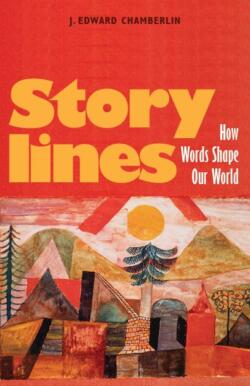 British novelist D.H. Lawrence once quipped that readers should trust the tale and not the teller. What did he mean? Prof emeritus J. Edward Chamberlin offers some possible answers in his new book Storylines. He might suggest that you can do both and be safely within age-old storytelling traditions. After all, storytelling is full of contradictions, as he explains.
British novelist D.H. Lawrence once quipped that readers should trust the tale and not the teller. What did he mean? Prof emeritus J. Edward Chamberlin offers some possible answers in his new book Storylines. He might suggest that you can do both and be safely within age-old storytelling traditions. After all, storytelling is full of contradictions, as he explains.
Chamberlin draws heavily on his long tenure as a now retired University of Toronto professor to take us from mythical storytellers of old to modern scientific storytellers. He moves from the ancient Greeks as far back as mathematician Pythagoras to the indigenous peoples of North America, including several British Columbia First Nations.
As a senior researcher with the Royal Commission on Aboriginal Rights in the early 1990s, he was immersed in First Nations land claims where he heard numerous indigenous people’s stories of survival. The experience shaped his thinking about the power of storytelling.
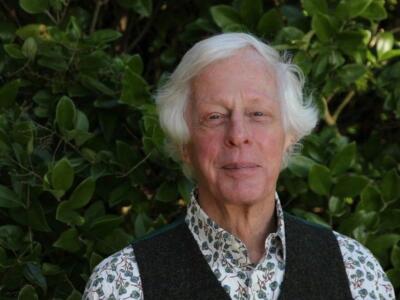
Here the connection to B.C. comes into sharp focus and Chamberlin makes clear his belief in the truth telling of indigenous elders. In fact, he argues that those stories are as valid in a court of law or land claims tribunal as any scientific or legal storytelling.
In a well-known legal case, Gitxsan First Nations elders needed to establish how long their people had lived in their traditional territory. “They told one story about a presiding spirit of their land – a grizzly named Madiik – who was so offended by some of the spiritual and material insults to his domain by the people who lived there that he brought down a rockslide and flooded out their ancient heartland.”
The story, likened to Noah’s flood, enabled them to recall elders’ stories dating their time living in the territory back 3,500 years. But they didn’t just rely on the elder’s stories. The also “drilled down in the centre of the lake created by the rockslide and brought up core samples to provide another dating, using the truth-telling methods of science.” It also verified the 3,500 date.

In a second reference to B.C., Chamberlin tells about the Doukhobor religious sect that migrated from Russia and faced an angry nativist backlash in the early to mid-1900s. To cope, they sang their stories. “With those songs, and the celebration of values of their community, they sang their way into a society that has been made much better by their presence.”
Some of Chamberlin’s philosophical views about storytelling may frustrate some readers as he describes the contradictory nature of everything. To believe in both a flat earth and a round earth might grate on the linear reality of many readers. Chamberlin has no problem with such apparent contradictions, saying that they simply become “consolations.”
Storylines makes us think harder about what we have been taught to believe and to reassess those beliefs. “Comfort with wonder and wondering is central to storytelling,” he tells us, “sustaining contradictions even as it invites belief.” For Chamberlin, “belief keeps us going. Doubt keeps us alive.”
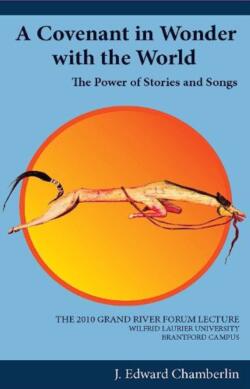
He challenges us to look deeper at the stories we have heard since childhood and those we hear every day from everyone from the local preacher to the politician to the sports commentator. They are all storytellers and their stories are all matters of interpretation, all searches for the truth.
As a school kid, he was asked to tell the class that the letters C – A – T meant cat. He disagreed and the teacher kicked him out. He was later exonerated when the teacher recognized that he was right; the letters C – A – T were just letters on a blackboard but could also represent a cat.
Storytelling plays a healing role in our lives, he says, comforting us and reassuring us that what we believe is possible. It is a way to sooth our spirits, let us escape into a story. And spirituality frequently fits Chamberlin’s thinking.
He returns time and again to religious storytelling traditions, referencing the Bible, the Koran and other texts. But this is not a religious tract. It goes much beyond a standard set of beliefs to question all beliefs and urge readers to do the same. Ask deeper questions. Go down the rabbit holes of life, he advises. Storytelling “brings us company and often shows us how to keep company with ourselves.”
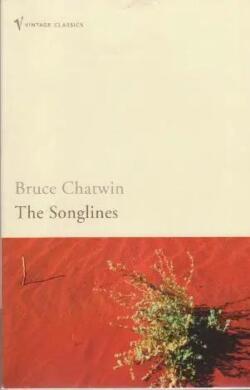
He cites creation myths of aboriginal peoples from the Māori of New Zealand to the huge tribal world of Africa and Asia to our own in North America. Reading Chamberlin’s many stories of indigenous storytellers reminded me of British travel writer Bruce Chatwin’s book The Songlines. There Chatwin challenged readers to understand how aboriginal people in the Australian outback could travel to their destination thousands of kilometres away by following their ancestral spirits to provide knowledge, cultural values and the wisdom of the land.
For Chamberlin everyone is a storyteller from classic novelists like Virginia Wolff and composer Igor Stravinsky to cowboy poets to reggae singer Bob Marley and blues great Huddie Ledbetter (Leadbelly) to prehistoric cave paintings, all practice different ways of telling stories.
That even includes riddles. When can a live chicken be boneless? You’ve probably guessed the answer, so I won’t give it away. It’s an example of the fun and great pleasure Chamberlin takes from telling his own stories and recounting those of others.
“We don’t have a GPS for the uncertainties of life,” Chamberlin says, adding that “sometimes lost is better – and usually more interesting – than found.” Storylines celebrates those uncertainties often in the form of poems. An American provides one that illustrates Chamberlin’s sometimes confusing but always thought-provoking theme:
Yesterday, upon the stair
I met a man who wasn’t there
He wasn’t there again today
I wish, I wish he’d go away.
D.H. Lawrence told his readers to trust the tale, but Chamberlin suggests that it is another uncertainty we will just have to live with and enjoy.
*
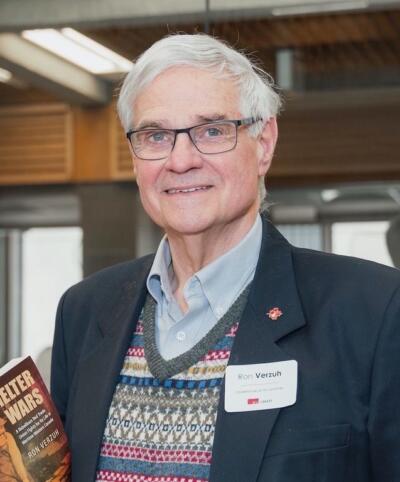
Ron Verzuh is a writer, historian and documentary filmmaker. His new book Printer’s Devils (Caitlin Press, 2023) tells the 30-year social history of the Trail Creek News, a feisty pioneer newspaper in Trail. His recent book, Smelter Wars: A Rebellious Red Trade Union Fights for its Life in Wartime Western Canada (University of Toronto Press, 2022), was reviewed by Bryan D. Palmer; an earlier book, Codenamed Project 9: How a Small British Columbia City Helped Create the Atomic Bomb (2018), was reviewed by Mike Sasges. Editor’s note: Ron Verzuh has recently reviewed books by Glen A. Mofford, Derek Hayes, Keith G. Powell, Derryll White & Erin Knutson, Lily Chow, and Jean Barman, for The British Columbia Review, and he has contributed an essay on trade unionist Harvey Murphy. Ron lives in Victoria.
*
The British Columbia Review
Interim Editors, 2023-24: Trevor Marc Hughes (non-fiction), Brett Josef Grubisic (fiction)
Publisher: Richard Mackie
Formerly The Ormsby Review, The British Columbia Review is an on-line book review and journal service for BC writers and readers. The Advisory Board now consists of Jean Barman, Wade Davis, Robin Fisher, Barry Gough, Hugh Johnston, Kathy Mezei, Patricia Roy, Maria Tippett, and Graeme Wynn. Provincial Government Patron (since September 2018): Creative BC. Honorary Patron: Yosef Wosk. Scholarly Patron: SFU Graduate Liberal Studies. The British Columbia Review was founded in 2016 by Richard Mackie and Alan Twigg.
“Only connect.” – E.M. Forster
2 comments on “1853 Trust the tale not the teller?”